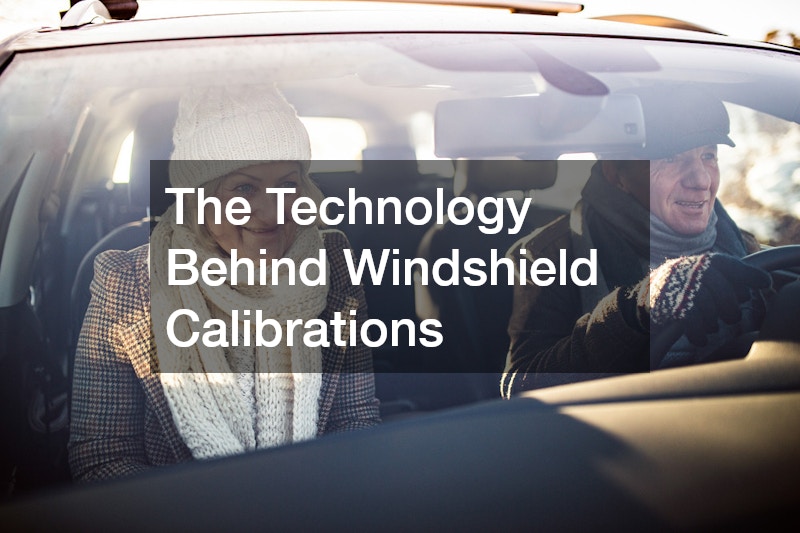Modern vehicles are equipped with an array of advanced driver-assistance systems (ADAS) that rely heavily on the proper alignment and calibration of windshields. Windshield calibration is a crucial process that ensures the correct functioning of various safety features like lane-keeping assist, collision warning systems, and adaptive cruise control. As technology in automobiles advances, windshield calibration has become increasingly sophisticated, requiring technicians to understand and apply complex methodologies. This blog post delves into the intricate technology behind windshield calibrations and its indispensable role in automotive safety. Read on to learn more about the technology behind windshield calibrations, including camera and sensor integration, static calibration, dynamic calibration, augmented reality, and other technology.
Camera and Sensor Integration
At the core of windshield calibration is the integration of cameras, sensors, and other devices into the windshield and its surrounding framework. These components collect real-time data to provide feedback to the vehicle’s safety systems. For instance, cameras mounted on the windshield are used for detecting road markings, obstacles, and traffic signs. The data collected assists in making split-second decisions that can drastically improve driver and passenger safety. Properly calibrated equipment is vital in ensuring that all these ADAS features function at their peak performance level.
Static Calibration
One method of windshield calibration is known as static calibration, where the vehicle is stationary, and a specific target image is placed at a defined distance from the vehicle. This target image is then read by the car’s camera system to adjust the sensors accordingly. The precision required in positioning the target underscores the complex nature of this process—an error of even a few millimeters can lead to discrepancies that may affect system reliability. To achieve this, technicians utilize specialized software that aids in the alignment and calibration of the sensors with the utmost accuracy. In essence, static calibration is a technological ballet, requiring both the expertise of highly trained personnel and state-of-the-art equipment.
Dynamic Calibration
Alternatively, dynamic calibration requires the vehicle to be driven under specific conditions, allowing the onboard systems to calibrate themselves in a real-world environment. An inherent advantage of dynamic calibration is that it accounts for slight variances and adaptations the sensors need to make in actual traffic conditions. Despite this advantage, dynamic calibration is significantly challenging, as it requires a controlled yet varied environment to trigger all necessary sensor functions. Technicians often employ rigorous protocols and testing sequences, sometimes leveraging GPS and other environmental metrics to ensure comprehensive calibration.
Augmented Reality
The introduction of augmented reality (AR) into windshield calibrations represents the newest frontier in the technology. AR uses heads-up displays (HUD) and overlays digital projections onto the windshield to assist drivers with navigation and other real-time information. This creates a seamless interaction between digital data and physical reality, making the calibration process even more complex. Technicians need to consider both the digital and analog inputs to ensure a symbiotic relationship between the features and functions of the calibration. As cars continue to integrate more AR features, calibration processes are bound to evolve, bringing both challenges and innovations.
Technological Assets
Besides enhancing safety, proper windshield calibration can also extend the longevity of the vehicle’s technological assets. Regular calibration checks help identify potential faults within the system that may be remedied before causing significant mechanical failures. For instance, misaligned cameras or sensors can lead to unnecessary alerts or even system shutdowns. Consequently, windshield calibration not only safeguards the immediate operational capability of ADAS but also contributes to long-term vehicle health. Manufacturers and service providers are increasingly recognizing the importance of routine calibrations, integrating them into standard service checks to ensure optimal vehicle performance.
In conclusion, windshield calibration is a technologically advanced and essential process for maintaining vehicle safety systems in modern automobiles. With the continuous evolution of vehicle technology, the need for precise and effective calibration methods becomes ever more important. By integrating advanced tools and methodologies, technicians can ensure that windshield-mounted cameras and sensors provide accurate data for ADAS systems. Whether through static, dynamic, or augmented reality calibration methods, maintaining these systems is essential for the longevity and safety of vehicles on the road today. Future innovations will undoubtedly continue to refine and augment the capabilities of windshield calibration, making it an exciting field within automotive technology.
.
